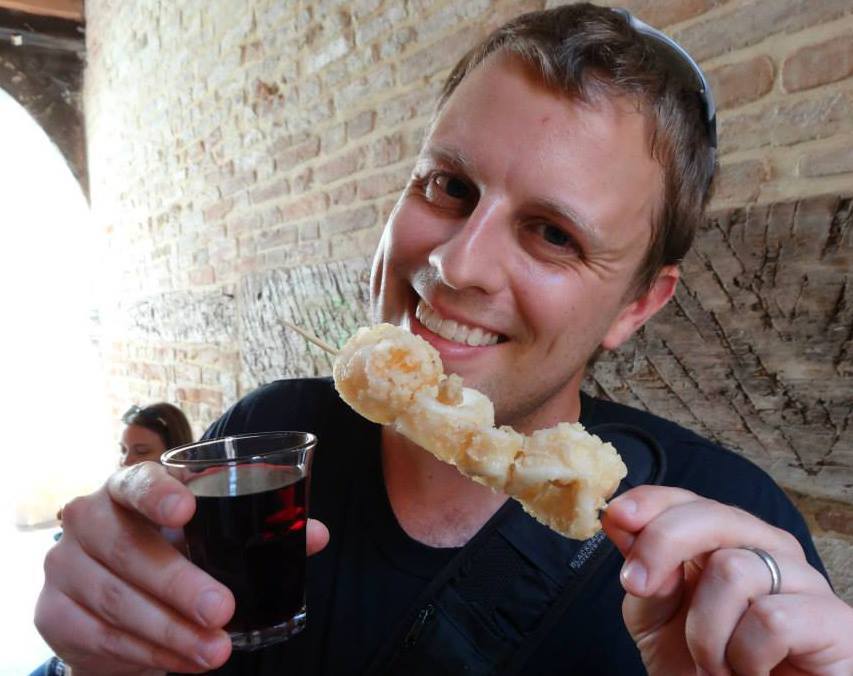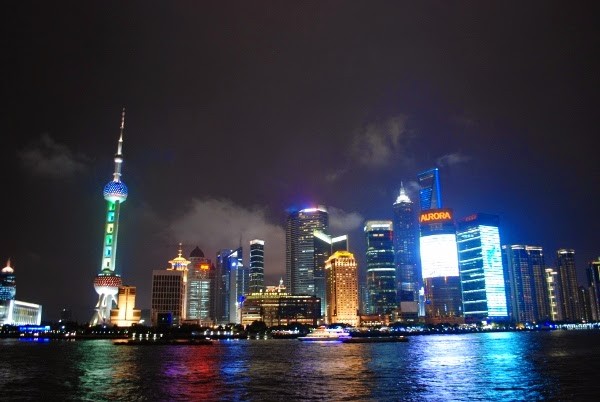Published by Jeremy. Last Updated on August 7, 2022.
Disclaimers: Our site uses demographic data, email opt-ins, display advertising, and affiliate links. Please check out our Terms and Conditions for more information. Listed prices and attraction details may have changed since our visit and initial publication.
Ah, skyscrapers. We all love them.
Articles using the skyscraper technique are the bread-and-butter for many popular blogs as they have the capacity to reach an audience no matter where they are shared- be it a search engine, social media, or otherwise.
But for every one blog that does the skyscraper technique well, there are countless others that fall short. And just like the building type these articles are named for, if you don’t do everything you can to stand out, you may just blend in to the background rather than becoming the highlight.
We’ve had experience on both sides of this spectrum, and found a common trend among those who do not get the full potential out of the skyscraper technique, and that is simply this:
You’re not in the position to write them in the first place.
Most Fall Short on the Skyscraper Technique
The traditional approach bloggers take to the skyscraper technique follows three unique, yet very standardized steps:
- Find a topic that is popular.
- Make a post that is bigger, better, and longer than the most popular one out there.
- Get other influencers in your community to link to it as the “best” resource on the topic.
The theory goes that if you produce the biggest and most comprehensive article on a topic, and get other influencers to link to it, Google will respond favorably with a high placement in competitive (and well-targeted) keywords. If all goes well, the visual cue of a robust article on the first page will then help generate boatloads of traffic to your site. (And yes, we do mean boatloads.)
So if you are looking for a post on, say, top travel hacks, and you find that the most popular post on Google has 25 hacks, perhaps you want to figure out a way to re-write the article with 50 or 100 inspired hacks to raise the bar.
This is all well and good if you can achieve the three points listed above, except there is one little piece of information that is often missing from the skyscraper technique that we also think is important to ask: why are you the one to build the skyscraper?
To really get the full benefit of a skyscraper post, you have to convey to your audience that you are the expert on the topic as well.
Depending on the skyscraper you wish to pursue and the niche of your site, generating this social proof becomes a whole lot harder. To put it bluntly, no one is going to care that you wrote a post about 100 of the best travel hacks if you aren’t branded as a travel hacking expert to begin with on your site!
For those who have read our previous blogging tips posts, you’ll know that we love to talk down on global travel blogging as an industry. We do this because most travel bloggers simply don’t have what it takes to be considered an expert in any niche, let alone the one their site is focused on to begin with.
This is a huge problem for those looking to build more value into their site via skyscraper posts.
These writers travel and publish articles, but rarely ever dive down deep enough to get on anyone’s radar- even Google’s. (Check out our niche blogging visualization post for a more detailed explanation on why that is.)
So when we built our own skyscraper method for our local Pittsburgh blog, we wanted to expand on conventional wisdom a little bit more- both to claim our expert status and also to give our site the foundation those skyscrapers need to be built on. Without this, you may want to quit while you’re ahead.
Our Modified Skyscraper Technique
Our modified skyscraper technique takes on the traditional approach of building a list or guide bigger and better than anyone out there, but we take the approach one step further and follow the structure illustrated below (click the image to expand it in a new window):
This modified view takes on three distinct layers:
The first level is blog posts with single topics.
The second level is the standard listicle / best of / Top X lists that most skyscrapers are based off of.
The third level is one dedicated resource that ties it all together and commands market presence as us being, without any doubt, the best at what we do.
We think that in combining these three, along with standard practices of the skyscraper techniques, is what really causes the rapid growth we all long for.
So let’s break them down layer by layer and go into more detail about our approach on our local Pittsburgh blog, Discover the Burgh.
• Planning a trip? Find a flight deal.
• In need of a room? Check out hotel and apartment prices.
• Taking a cruise? Find a cruise itinerary for your journey.
• Don't overlook picking up a rental car or day tours as well!
Level 1 – Single Topic Blog Posts
Most content from global travel bloggers falls into this category, where each post tackles one individual topic. It could be a restaurant review, a story from an attraction, a hotel review, a three-day summary, or more, but overall focuses on one very specific detail of a destination or niche topic.
The problems with these posts are many, and include the fact that your subscribed audience may not be interested in the topic, that Google traffic potential could be extremely low, and, overall, the article itself may not gain any value at all other than being there for completion’s sake for the narrative you’re putting together.
This is great for flexing your expertise, if you have one, but bad if you are only writing a disjointed string of posts while bouncing around from place to place with no rhyme or reason.
This isn’t to say that a post doesn’t have value, because an individual post may indeed be exceptional, but to really produce a good foundation your articles must cement your expertise on something. For most, coming up with a plan to capture this is the hardest part of all due to how broad global travel writing niches are (and is one of the reasons we’ve went hyper local on a city blog with a great deal of success.)
On our local Pittsburgh travel blog, we are striving to visit and write about every attraction, experience, and restaurant in the city. Not everyone in the city is interested in every article we write, but by stringing together posts of this nature we can safely call ourselves city experts because we will, at some point in the future, quite literally have done everything (and that is a damn good foundation for the levels that follow).
Posts in this level include our Smallman Galley Review, Heinz History Center review, and our Embassy Suites Pittsburgh Review – three very distinct article types we write a ton of on our site, all with the common connector of being on one very focused topic.

Each of these may get a few hundred views when shared on Facebook to our community of 100,000+, and have high bounce rates on the order of 90% or more. They may rank on the first page of Google for their respective search terms (a strong indicator on your site’s authority, by the way), but most receive only one or two thousand impressions per month, and the clicks are quite low no matter what.
You could look at these from one perspective and say they do not have value, because writing an article for that level of return is not that great. But we look at it a little bit differently and leverage their authority, no matter how small, into our next level of posts for larger traffic gains.
Level 2 – Conventional Skyscrapers
Conventional skyscrapers come in to play when you can put together a resource that is more comprehensive than any other out there, such that it demands attention- clicks, links, respect, you name it.
More often than not, conventional skyscrapers take on the listicle format as the visual cue of “125 of the Best _______ in _______” is a pretty inviting narrative no matter where it is shared. But you have to do it right.
The reason travel bloggers typically fail at these is because a “7 Things to See in Bangkok” listicle is not comprehensive if the list is literally only the seven things you saw on a three day visit- something anyone who spent four or more days in the city would see right through. (My guess if you want to take that topic and turn it into a skyscraper, the list will have to exceed 100. Good luck doing that in three days on your gap year- it took us 18 months to find 156 things in Pittsburgh.)
For those with a more focused niche, if you don’t convey the fact that you’ve actually experienced these spots, you might as well define the list as “X Things We Found in a Google Search,” because it’ll come off just as that to anyone paying attention.
On the local side of things, we’ve seen our competitors rush to the skyscraper concept for its click-bait potential. But rather than making informed entries they fill it with generic (and sometimes outright incorrect) write-ups with poor stock images from other photographers or the businesses’ websites themselves. It may be good in the short term, but this really hurts in the long-term as the site’s potential starts and ends at the skyscraper alone.
Are they experts? Do the site owners even have names? Why should anyone trust them beyond an entertaining, mindless article? How can Google’s algorithm begin to consider them a trusted source? This is where the level one, single topic posts come in to play.
If you can build a skyscraper where each bullet includes a link to a sub-topic on your site, you end up with several important results that your competitors will miss:
- Valuable links to other internal pages on your site that already have authority.
- Potential click-throughs from your readers who are interested in learning more, thus generating more page views.
- A perceived authority to those who care as you’ve elaborated on every single topic featured in the skyscraper in lower-tiered posts.
We keep the later point in mind for all skyscrapers we write, and often plan them out for months before they go live as the culminating skyscraper article often tells us what we’re missing in the level down below. It is then a judgment call on publishing with a few omissions to be filled in later, or waiting until we generate more lower level posts to roll up into a comprehensive skyscraper.
Those posts may not go a long way individually, but they certainly pull their weight when referenced in a larger, more traffic friendly post.
On our local Pittsburgh blog, articles we would consider of the skyscraper variety include our Strip District Guide, 156 Things to Do in Pittsburgh, and our Pittsburgh hotels database to name a few.
Each of these may get 500-2,500 views when shared to our community on Facebook, are extremely cheap to boost (think pennies per click), and have minimum daily page views on par with what our single topic posts max out at on days when we share them.
On the Google side of things, we are then able to target these posts for keywords that get a lot of search traffic, on the order of tens of thousands to hundreds of thousands of impressions per month (10 to 100 times more than our single topic articles) and the skyscraper approach ensures they reach the first page with relative ease.
You could stop here, but we have one more level that we’re working to. One that may only work in select niches like local travel blogging.
Level 3 – One Central Hub of Everything
We take the conventional skyscraper technique one step forward in the format of a Burj Khalifa skyscraper– one post that is so large that it puts all other skyscrapers nearby to shame.
You see, it is easy to get people in to your site with the skyscraper technique and send them out to multiple pages. But for those with a hyper-focused niche site, especially in the travel market, you may be able to go further than that.
On our local blog we found that all of our skyscrapers took the niche topic of our city and split it up into sub-categories. Things to do on Weekends, Restaurants, Museums, Christmas, you name it. We can partition our niche all day long into topics that would make for perfect skyscrapers featuring our base level articles. No matter what we come up with, we get a ton of traffic from it and rank for it rather quickly.
But this is not the biggest picture of our site- the city itself is.
This is where the highest level of skyscraper post comes in to play through one comprehensive resource that includes everything. (Ours for Pittsburgh is found here.)
It may not be in the listicle or detail oriented variety of traditional skyscrapers, but this one serves another purpose, and that is to route visitors to the topics they are interested in the most while also being easy to market.
A comprehensive feature like this shows that you are, without a doubt, the foremost expert on the topic. Not only to be that much better than your closest competitor, but to make any would-be challengers give up while they have the chance.
From there, your readers can drill down on any topic they want with the knowledge that they’re at the right spot for all recommendations moving forward.
Global travel bloggers will never get here, and it is purely because they do not organize themselves in a small enough niche that they can ever become the foremost expert on a topic. The fields are too broad and too competitive that it would take several lifetimes to reach the level of expertise you need for this one.
But for those who focus in on tighter and tighter niches, skyscraper building become possible. And by putting more and more layers together in a way that resonates with your audience, growth (and Google ranking) follows.
Our ultimate goal? To rank for the city name itself.
Have an existing blog that is in need of an upgrade? Check out the following services we personally use!
- BigScoots - Premium managed hosting with plans as low as $35/month.
- GeneratePress - A customizable theme designed for site speed.
- AdInserter Pro - A widget logic plugin that is quite powerful.
- WP Rocket - An image and caching optimization plug-in.
- Mailerlite - Cost effective newsletter service.
- Keysearch - Keyword research tool for SEO.
- Pretty Links Pro - A great link cloaking tool to clean up affiliate links.
Book a Hotel Today
About Jeremy

About the Author: Jeremy is a full-time travel writer based in Pittsburgh and primary author of this site. He has been to 70+ countries on five continents and seeks out new food, adventure activities, and off-the-beaten-path experiences wherever he travels.








I think your post is the most comprehensive article on niche travel blogging. Such great ideas! I’ve bookmarked your post.
Thank you!
Hey guys, really helpful post! I have a question though, if you continue to modify the 156 things to do in Pittsburg, say to 200 or 250 things, won’t you lose a bit page authority and/or is it bad for SEO because of the change in URL? Or is this not that relevant because both PA and SEO will bounce back because you have great content? Thanks!
We don’t have the number 156 things in the URL- only the title, text, and meta descriptions. The increased number would likely help with CTR but the SEO and page rank would be the same as long as the URL itself isn’t changed. If you do change the URL then I’d make sure to do a redirect to the new one and eventually it’d recover to where it was… but I wouldn’t do this since you’d lose social share counts, etc.